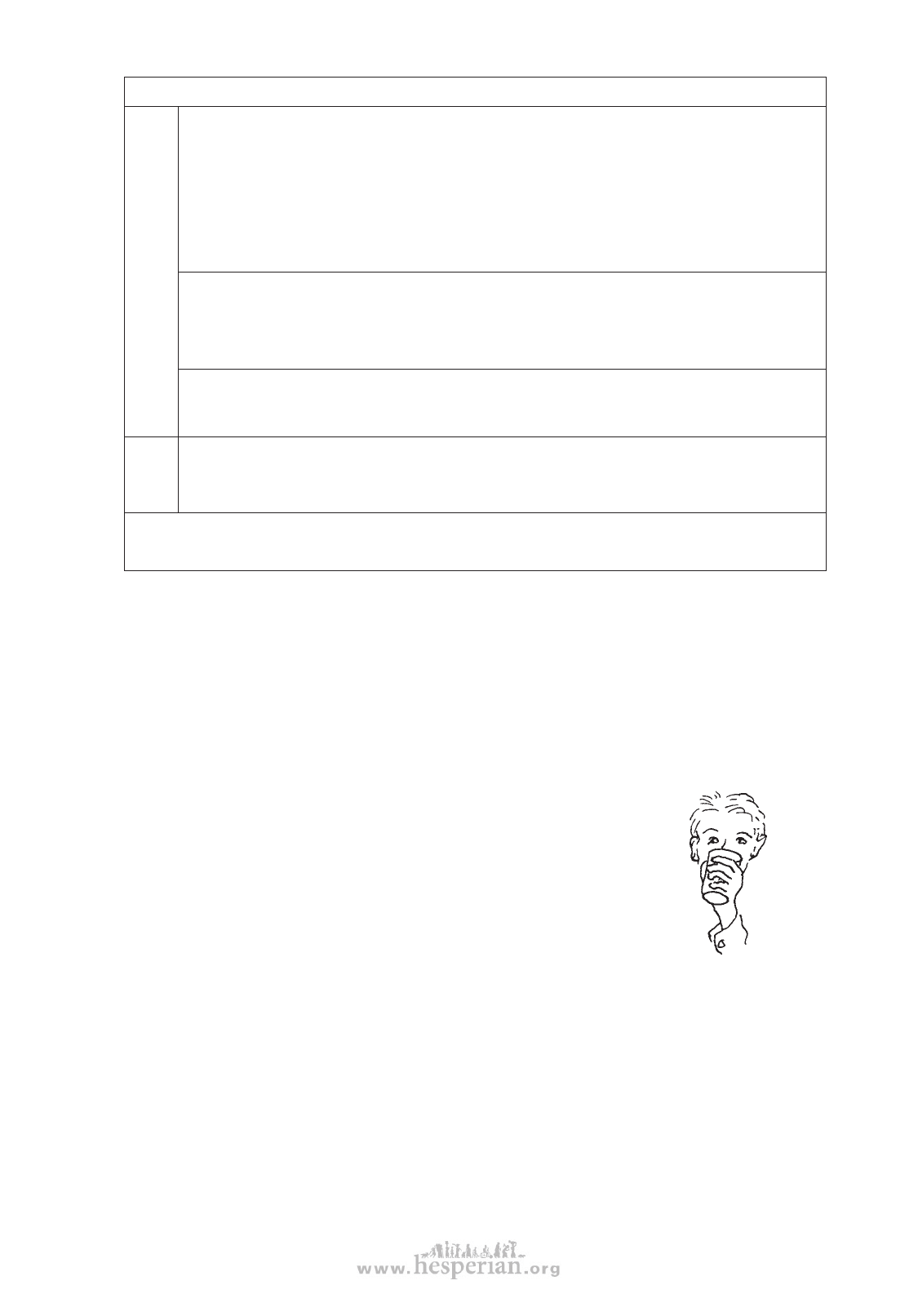
URINE AND BOWEL MANAGEMENT 211
TREATMENT FOR URINARY INFECTIONS
Medical name (and common brand)
A. Co-trimoxazole
(sulfamethoxazole 400 mg. with
GROUP
1
trimethoprim 80 mg.)
(Bactrim or Septra)
Age
6 weeks to 5 months
6 months to 5 years
6 to 8 years
9 years and older
Dose
¼ tablet
½ tablet
1 tablet
2 tablets
Repeat the dose
2 times a day
Note: This medicine can cause kidney damage unless the person drinks lots of water.
The medicine also comes in double strength (Bactrim DS and Septra DS).
Adjust tablet doses if using double strength tablets.
B. Amoxicillin (many brands)
(100 mg./kg./day)
under 2 years
2 to 10 years
over 10 years
Caution: Do not use for persons allergic to penicillin
125 mg.
250 mg.
3 times a day
250 to 500 mg.
C. Nitrofurantoin (Furadantin, Macrodantin)
(from 3 months:
5 to 7 mg./kg./day)
1 month to 5 years
over 6 years
25 mg.
50 mg.
4 times a day
GROUP
2
Cephalexin (Keflex)
(25 to 50 mg./kg./day)
4 months to 1 year
1 to 4 years
5 to 12 years
62 mg.
125 mg.
250 mg.
4 times a day
All persons with a urinary infection should always drink lots of water, especially while they are taking medicine.
Keep taking medicine until the infection is gone for 3 days, continue drinking lots of water, and take all preventive
measures.
PREVENTION OF URINARY INFECTIONS
• Drink lots of liquid: adults, at least 2 liters (8 glasses) a day.
• Eat apples, grapes, or cranberries or drink their juices or take
vitamin C tablets to make urine more acid. Bacteria grow
with more difficulty in acid urine.
(Note: Orange or lemon juice and other citrus fruits and
juices do not work! They make the urine less acid.)
• Keep hands, catheter, and collection bags very clean before,
during, and after your bladder program.
• Do not lie in bed all day. Stay active.
• Do not clamp the Foley catheter or plug it with anything
unless absolutely necessary, then use a sterile plug.
• Stick to your bladder program. Do not allow urine to sit in
bladder.
• Do not let the catheter get bent or twisted so that urine
cannot come out.
• If using a standard catheter periodically, be sure to put it in
regularly, at least every 4 to 6 hours. To prevent infections,
frequency of catheter use is even more important than
cleanliness. It is safer to put in the catheter without boiling
it than not to put it in. If infections are common, catheterize
more often.
To prevent urinary
infections, drink
LOTS OF WATER
disabled village children